Page created on May 8, 2019. Last updated on December 18, 2024 at 16:56
Staining: HE
Organ: Skin
Description:
There are two pathologies here: a compound nevus and a superficial spreading melanoma.
The melanocytes that comprise nevi (called nevus cells) are morphologically different than healthy melanocytes. They have larger nuclei, no dendrites and are often found in larger numbers, while normal melanocytes are usually found alone. Nevi are characterised by the formation of nests of nevus cells. In this slide nevus cell nests are found both in the epidermis and the dermis, so the nevus is of compound type.
The superficial spreading melanoma is found to the right of the nevus. The tumor cells are atypical and have prominent eosinophilic nucleoli. Most of them contain melanin pigment.
Some melanoma cells form nests in the epidermis. Some tumor cells don’t form nests and are instead spread in the epidermis. This pattern is called pagetoid spread and is classically described as if someone shot melanoma cells at the epidermis with a shotgun.
There are nests of cells in the dermis below the melanoma as well. These cells can be nevus cells to signify that this melanoma developed from a nevus (which is rare), or they can be melanoma cells that have spread vertically downwards. They don’t look malignant, but immunohistochemistry could determine whether these cells are malignant or not with certainty.
Diagnosis: Compound nevus and superficial spreading melanoma
Causes:
- Sun exposure
Theory:
The Breslow depth and Clarke level are used to stage melanoma.
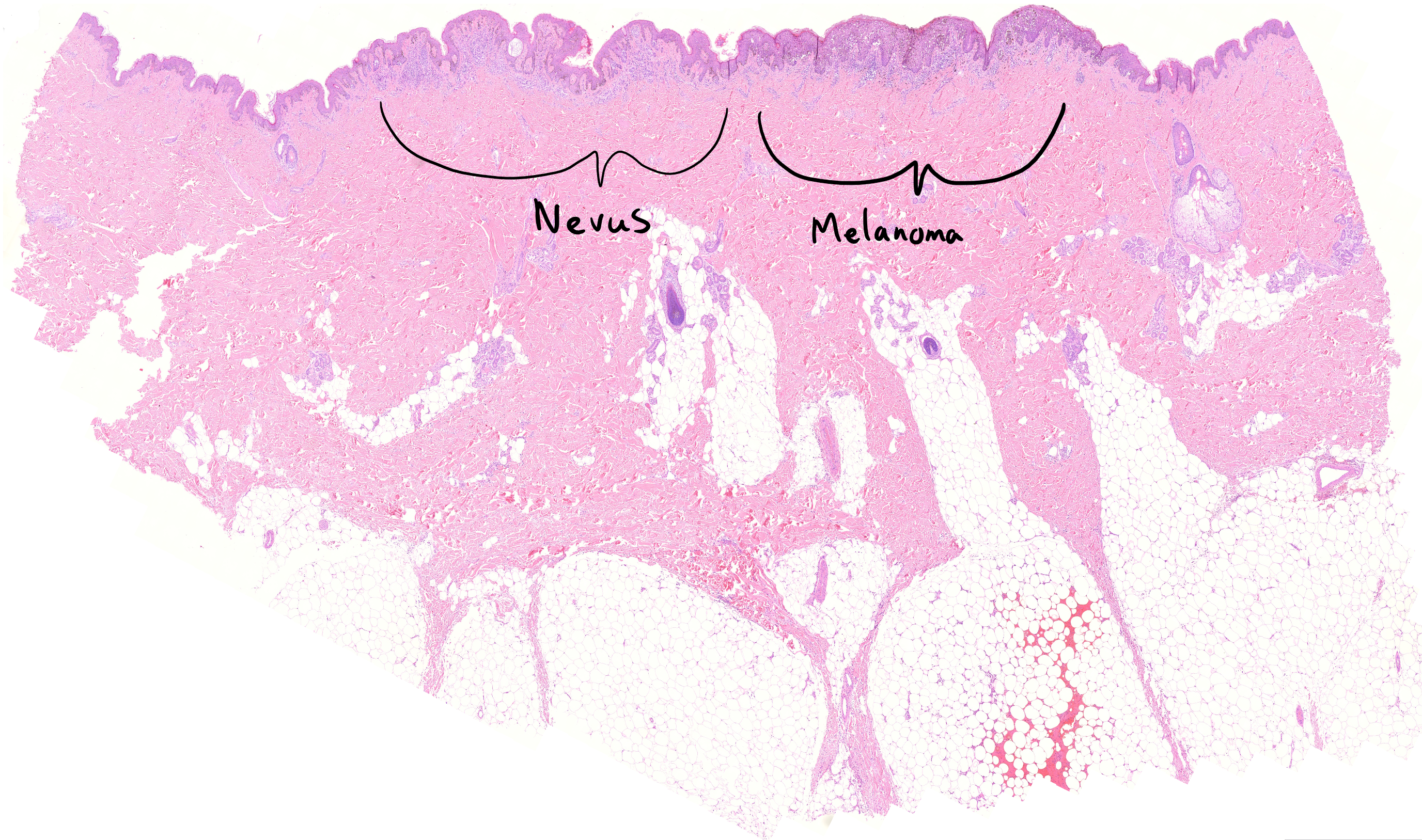
Overview
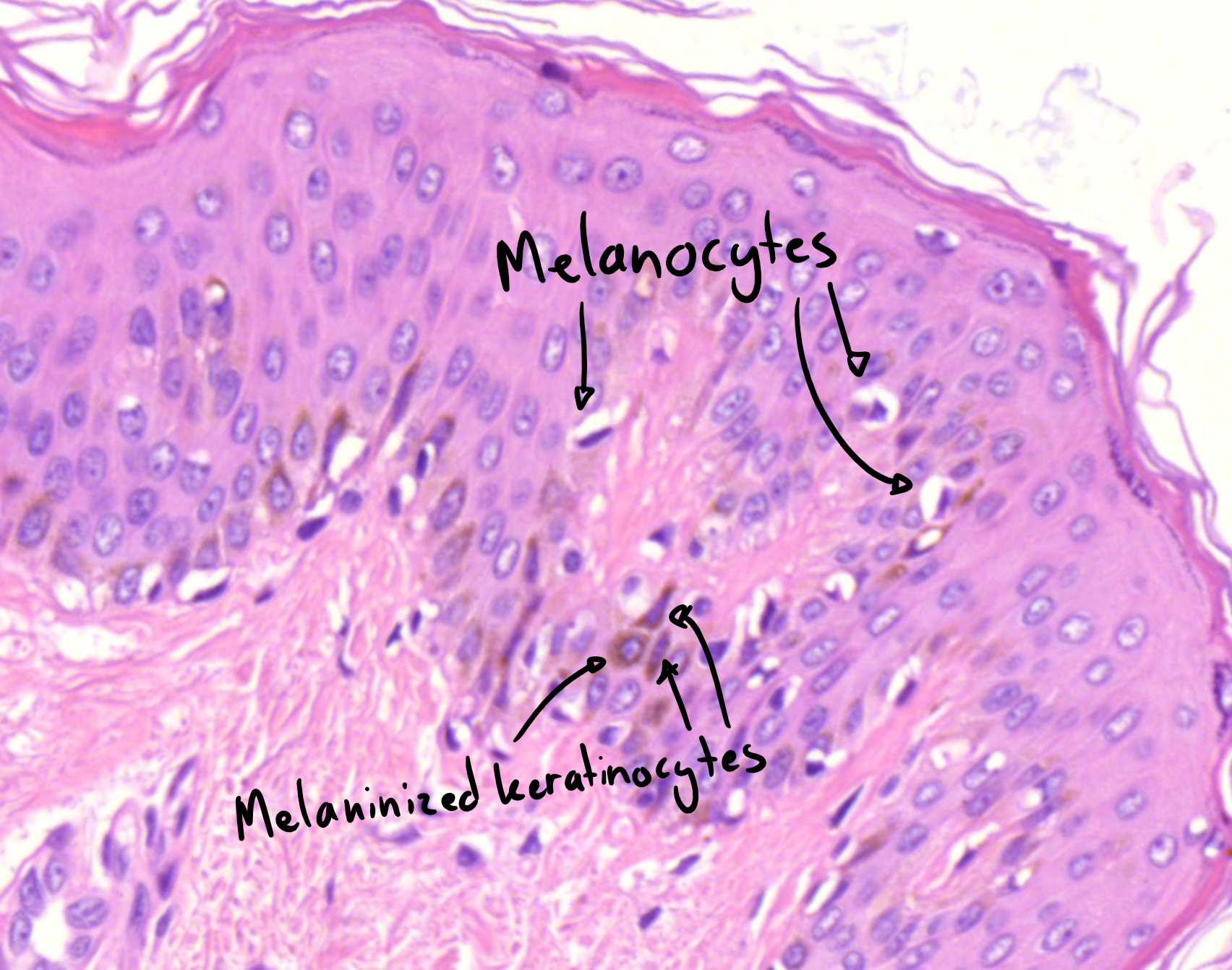
From the healthy part of the skin

From the nevus.
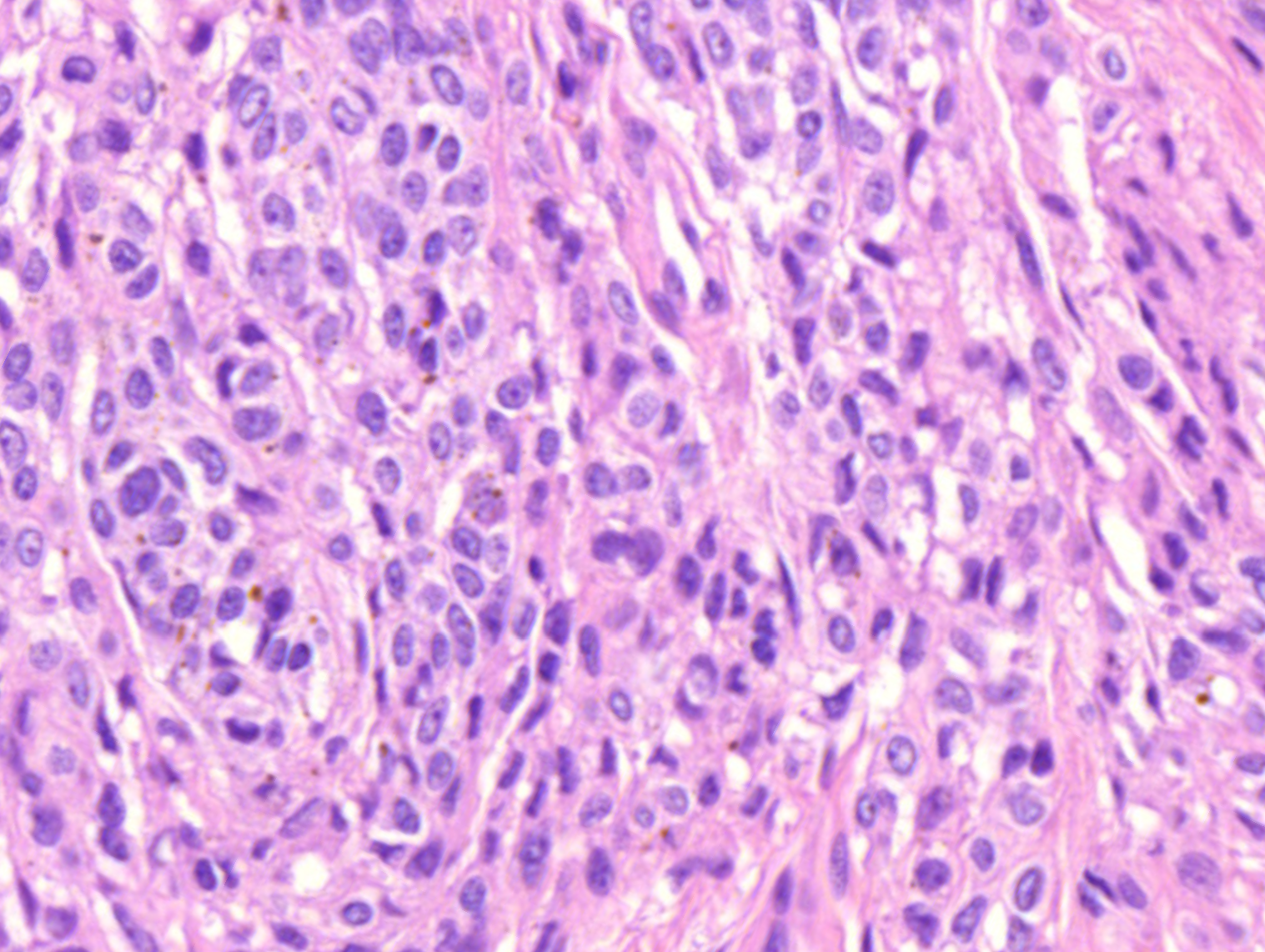
From the nevus. These are nevus cells and are morphologically different from the healthy melanocytes.
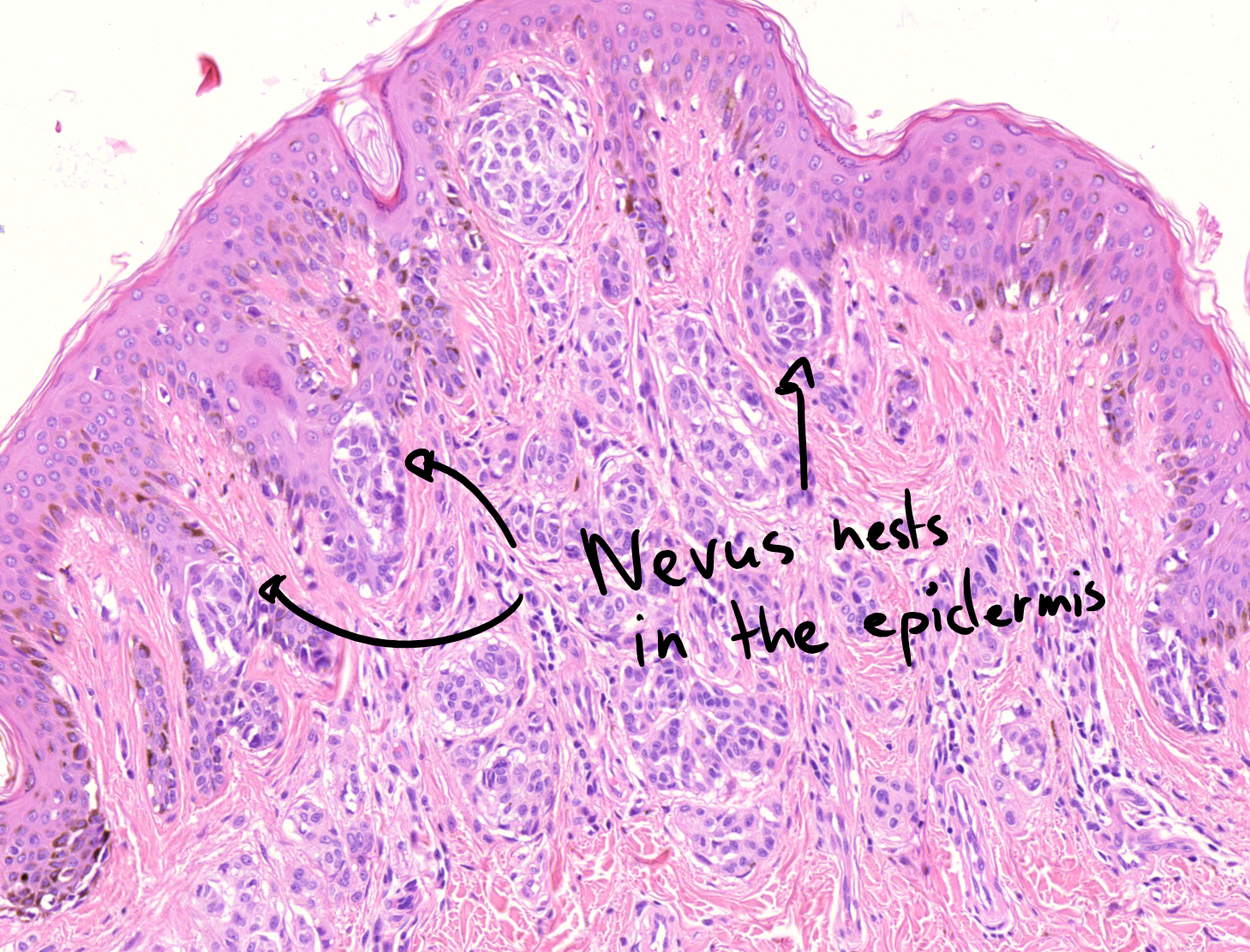
From the nevus
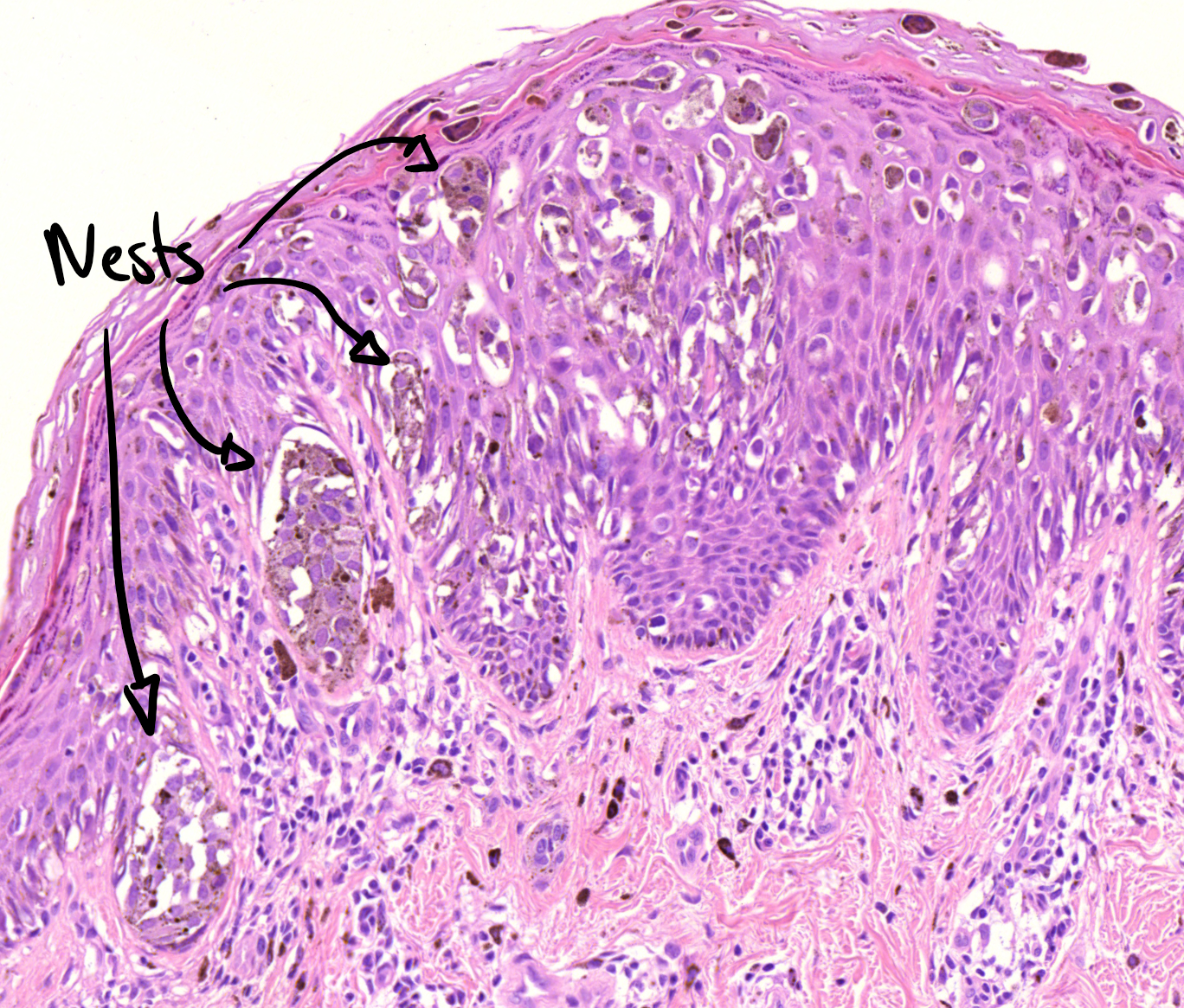
From the melanoma
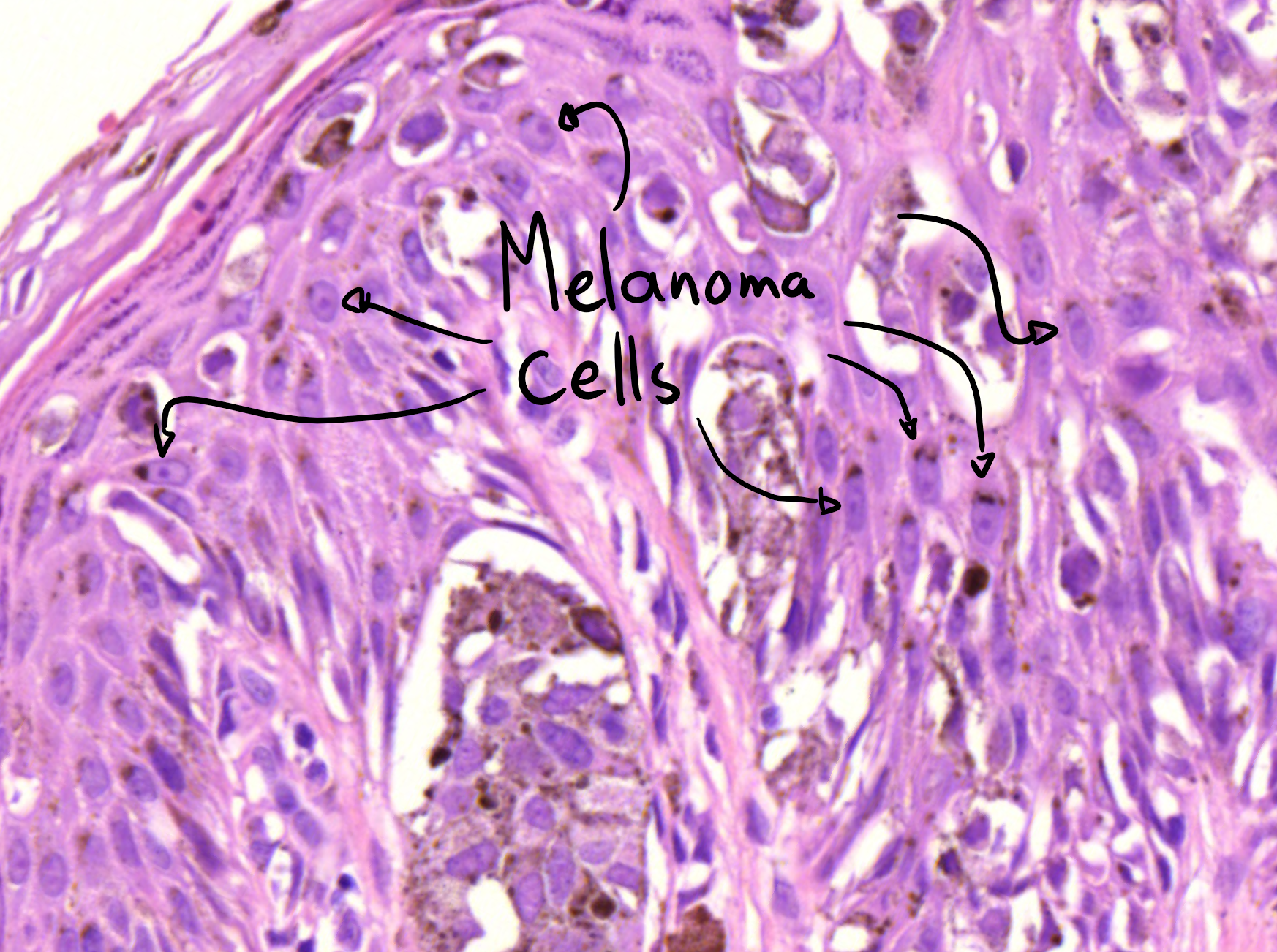
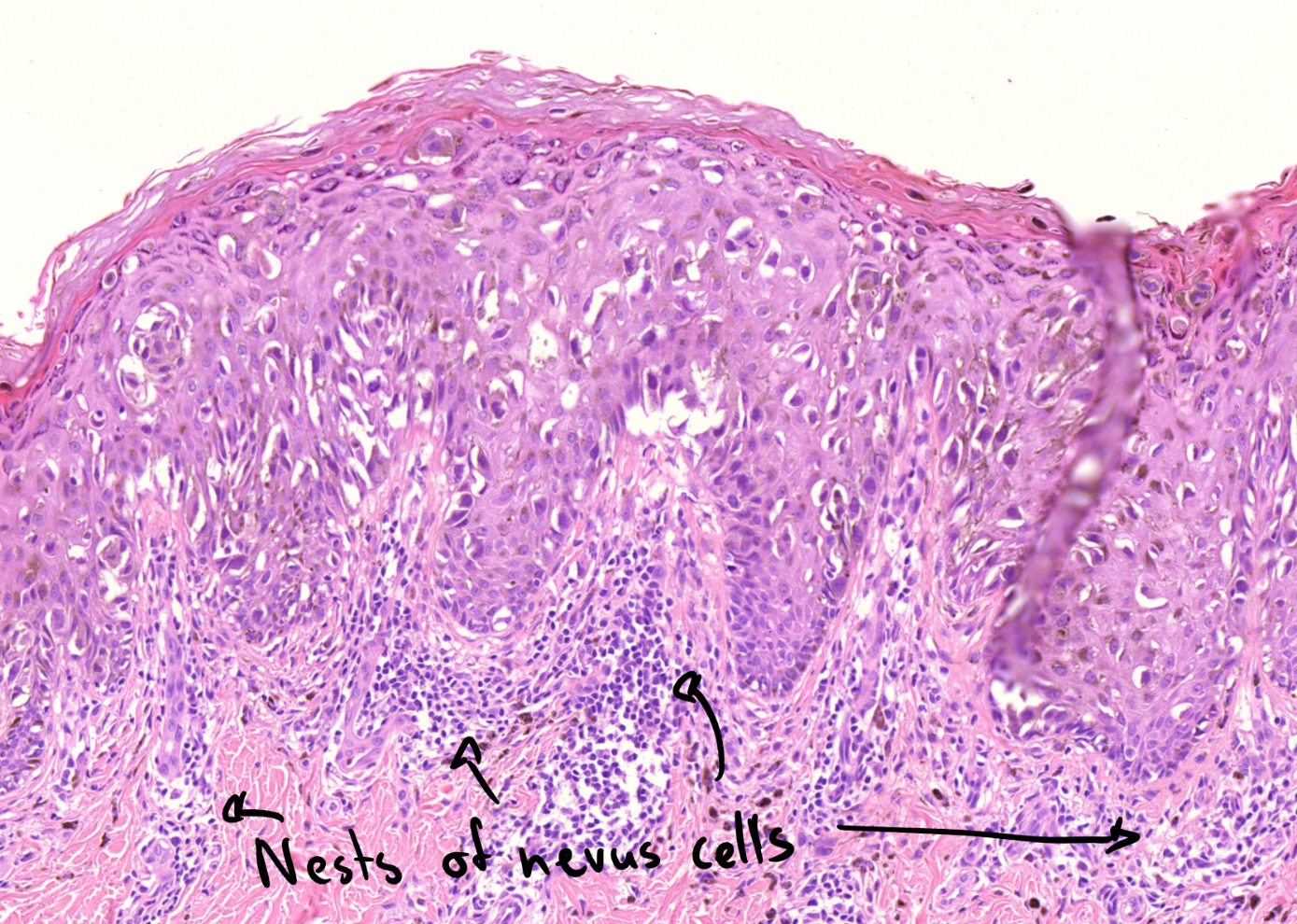
From the melanoma.
https://imgflip.com/i/30pjjb
I’ll suck yo dick for a pathology topic, man!
I don’t know what you mean but I’ll take it